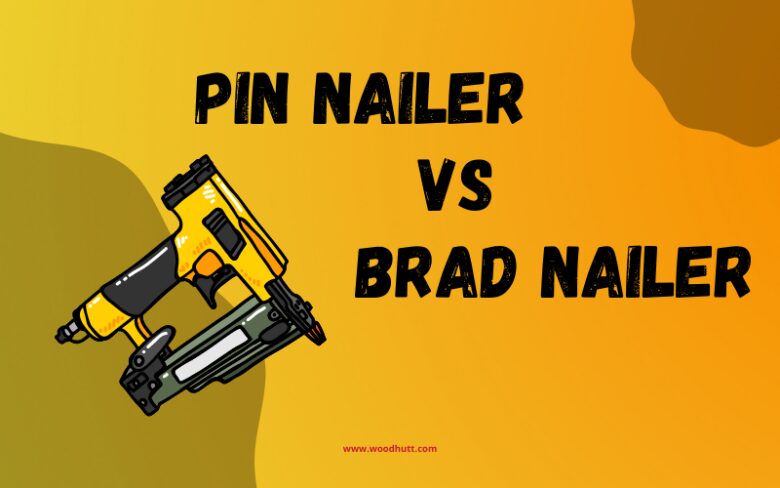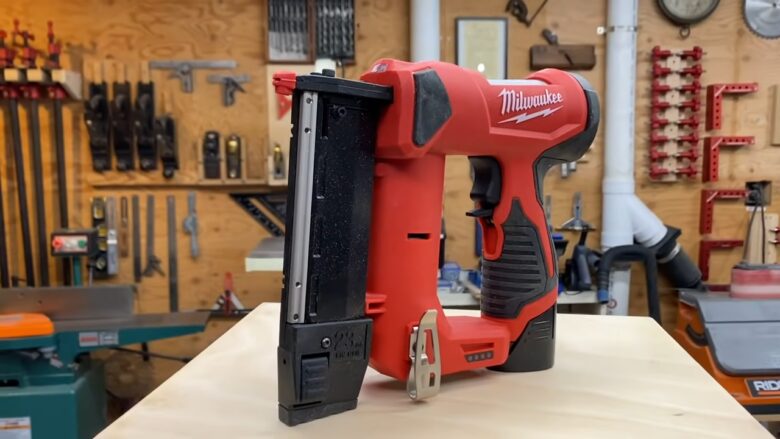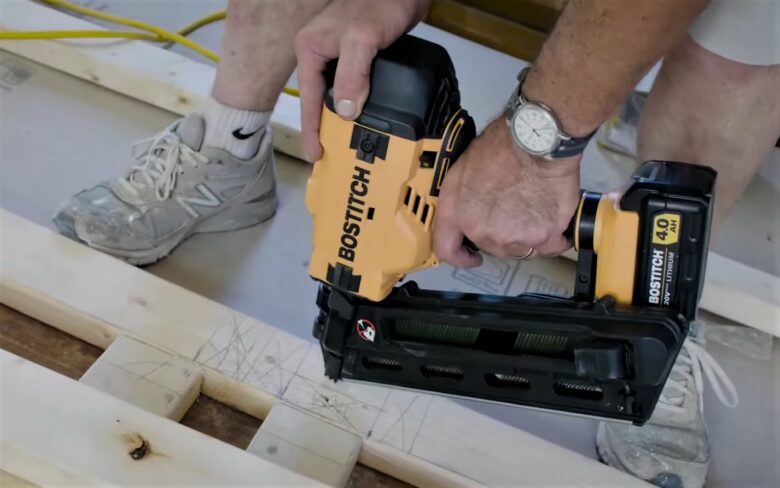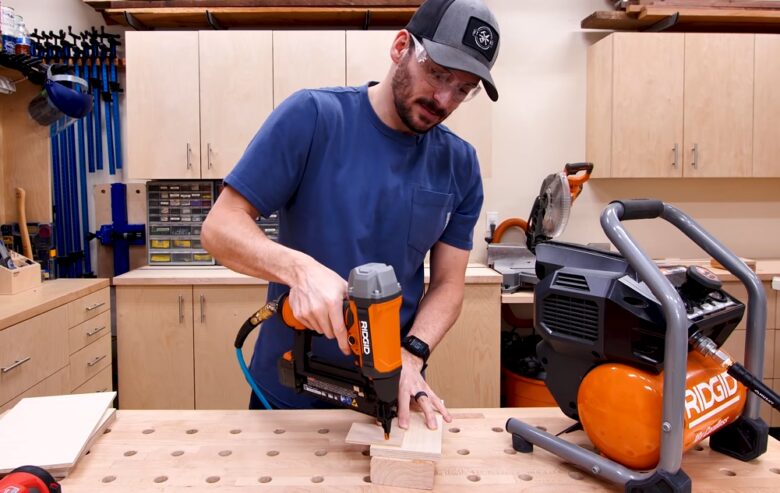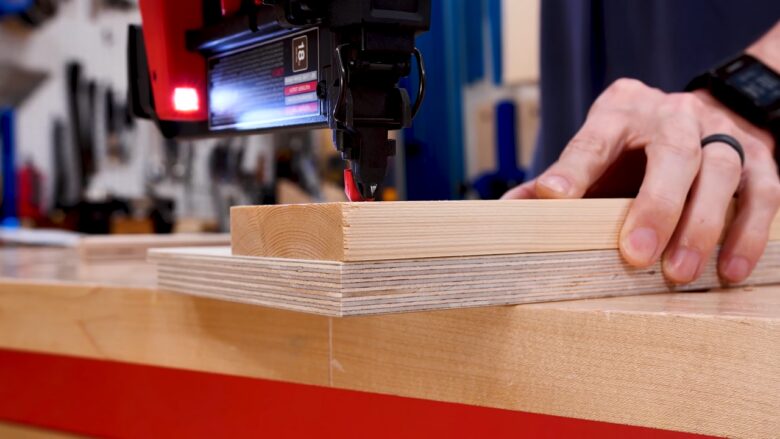Crafting a design needs dedication, keen observation, and effort. If you are familiar with crafting, you must know how important it is to watch fine details. To gain perfection in your DIY projects or crafts, know the details of your tools and when to use a specific tool.
In the world of carpentry, finishing nails play an essential role in adding an exquisite look to the final product. There are two types of nailers, which include a pin nailer and a brad nailer.
Usually, people confuse these two nailers and use a pin nailer instead of a brad nailer or vice versa. In this review, you will find the details about a pin nailer and a brad nailer and their comparison. This review will help you find an appropriate tool for your DIY project.
What We Have Covered
Pin Nailer vs Brad Nailer
Pin Nailer
In the market, you can also find pin nailers with a length of 2 to 3 / 8 inches. You can get a precise hole in the hardest piece of wood with this finishing nailer. It leaves a tiny hole for nail ejection, which does not need to be covered with paint or putty.
Pin nailers are headless and compact in design and add a visually appealing look to your project with their perfect finishing. Moreover, you can use pin nailers to co-join ultra-light fabrics like clothes, but you can also join the most complicated materials with strength and force.
Two types of pin nailers are available: the pneumatic pain nailer and the electric pain nailer.
Brad Nailer
It is known as ideal for base-boarding and heavy-duty carpentry work with sleek finishing. It leaves a comparatively large hole than pin nailer, which you can cover with paint or nail putty for outstanding finishing.
The brad nailer can easily support nails with 2 to 5 / 8 inches. Same as pin nailer, there are two types of brad nailer: the pneumatic brad nailer and the electric brad nailer.
The pneumatic brad nailer is powered with air pressure, whereas the electric nailer gets its power from batteries.
Difference Between Pin Nailer vs. Brad Nailer
Holding Strength
Pin nailers are different from brad nailers in terms of holding strength. Pin nailers have minimal holding power than a brad nailer. A brad nailer, in contrast, is best known for its strength and power and can shoot an 18-gauge thick nail with accuracy.
Moreover, you can use it for a heavy-duty carpentry job without any doubt. The pin nailers will allow you to attach the small wood pieces for a while, but they do not give you strong holding power.
The less holding power is due to its headless nails responsible for providing a great finishing look.
Safety
Power guns are not safe to use; therefore, proper precautionary measures should be taken while handling. Either it’s a pin nailer or a brad nailer; both power guns are risky to use.
Yes, the pin nailers are more compact and handy than a brad nailer, making it easy for users to carry it to different job locations.
Versatility
A pin nailer cannot provide you with more than a quick fix in terms of versatile functions. Yes, it adds a visual appeal to the project and quickly fixes the problem due to its compact design, but you can not expect more.
In contrast, a brad nailer provides you with versatile applications and can be used for small to large, heavy-duty projects. It is an ideal choice for large-scale wood and carpentry work.
Nail Size And Gauge Range
Both the power guns are different from each other in terms of the nail and gauge range. A pin nailer can support headless thin 23-gauge nails, whereas a brad nailer can support 18-gauge thick nails.
Pin nailer leaves a tiny hole for nail erection, whereas a brand nailer leaves a more open hole that can be covered with putty or paint to get the desired look.
Splitting wood piece
The pin nailer is best for trimming delicate wood pieces. It will not split the wood piece while you use it because of its low gauge and strength. While putting nails in the piece, it does not exert high pressure, leaving the wood intact.
In comparison, the brad nailer can split wood pieces due to its thick gauge range and is not suitable for delicate or soft materials.
FAQs
What is the difference between pin nailer and brad nailer?
Pin nailer and brad nailer are types of power guns. Pin nailer supports 23-gauge thin headless nails, whereas the brad nailer supports 18-gauge thick nails. The holding capacity of a brad nailer is more than a pin nailer and is versatile in its function.
Pin nailer makes tiny holes when put in the wood. In contrast, the brad nailer makes comparatively large holes which you can cover with paint or putty.
What are the similarities between pin nailer and brad nailer?
There are a few things similar in a pin nailer and a brad nailer. Both the power guns are used to drive nails in wood or other material. These tools are best for wood and carpentry work. Moreover, both tools are used to enhance the overall look of the material.
Can you use a brad nailer for making furniture?
Yes, you can use a brad nailer for making furniture. This power gun is ideal for woodworking and gives your furniture a more professional and stylish look. With its 18 gauge size, it supports thick nails that are best for heavy-duty projects.
The nails it drives through the wood keep your furniture intact for a longer duration. Furthermore, if you want to design cabinets, cupboards, you can use a pin nailer.
Conclusion
Power guns can be as efficient as any other tool, but essential is their selection according to their application. We can not use a pin nailer instead of a brad nailer because of the different gauge range; therefore, it is essential to use the correct tool to get the desired result.
Take a look at the following list:

